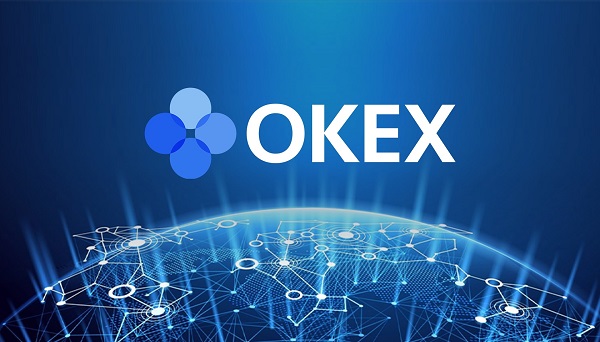Blockchain Courts and Cats That Look Like Dogs: How DAOs Wrestle With the Law
4 years ago CryptoExpert
In July 2018, a blockchain project called Kleros organized a competition, “Doges on Trial,” that asked participants to submit images of those cute little shiba inu pups known as “doges” for a kind of curated meme library.
Kleros asked for shiba inu photographs, but also encouraged participants to challenge dubious submissions through its blockchain voting software; anyone who managed to slip a cat through the net would be rewarded 50 ETH, worth $25,000 at the time. The idea was to test the limits of Kleros’s decentralized arbitration software, and its capacity for keeping a bunch of dispersed, anonymous individuals in alignment with a single goal. (The goal of building a library of doge memes.)
“This 50 ETH reward,” Kleros wrote nearly one year later, “was a way for us to test the cryptoeconomic robustness of the Kleros system, such as resistance to bribe attempts and other attack vectors.”
The problems began when a participant called “Ricky” managed to get an image of a fluffy orange cat—which from behind looked exactly like a shiba inu—onto the list without challenge. It looked like a sure win, and Ricky claimed the reward.
However, Coopérative Kleros, the French legal entity behind Kleros, issued a counterclaim through Kleros’s own interface. Citing a technicality in the official payout policy, Kleros argued that the submission did not qualify. Adjudication of the matter before a panel of Kleros jurors resolved in Kleros’s favor, and Ricky got nothing.
To Kleros’s critics, the result was a ludicrous irony: Kleros had designed the competition to see if it would be possible to fool its tech for a prize; when someone successfully fooled it, Kleros leaned on a bad interpretation of its own policy, and an arbitration system rigged to its favor (critics said), to deny the winner his rightful reward.
It was not a fairer system but a replication of the same venal human element that projects like Kleros were purportedly trying to replace with something better: decentralization!
The problem faced by Kleros—how to keep a distributed, leaderless group in alignment—is of increasing concern in the crypto world. DAOs (decentralized autonomous organizations) running on a mix of code-based policies and personal social layer have since become hugely popular, and “the case of the 50 ETH doge,” as it’s widely referred to now, has become something of a cautionary tale as crypto developers try and build systems that work better.
Broadly, they are trying to solve the longstanding “oracle problem” that arises when a decentralized entity that relies on smart contracts runs into real world complications.
“Say you want to hire me to build a website for you,” said Jordan Teague, an attorney based in South Carolina who also works as an arbiter on the blockchain platform LexDAO. “You lock up one ETH in a contract, and if everything goes well and you deliver what I want, the funds are released.”
But what happens if there is a dispute over whether the work is good?
Some data can reliably be assessed by a smart contract—the price of an asset, the amount of funds in a treasury—but qualitative assessments involving, say, the design of a website, or a picture of a cat that looks like a dog, cannot. In that case, you need to resort to human beings, who can offer something computers cannot: interpersonal mediation.
That is where people like Teague come in.
Teague is one of 18 “legal engineers” working with LexDAO, which provides experimental conflict resolution services for DAOs that have run into disputes. When a contractor agrees to payment terms with a DAO, LexDAO (through its “LexLocker” smart contract) offers to hold the funds in question in escrow until the work is complete. If any dispute over the quality of the work emerges, a panel of impartial legal engineers will assess each party’s claims and attempt to mediate, generally through Discord. The funds will only be released once the panel has issued its verdict, which is effectively binding. (Sometimes the release of funds will be staggered as certain milestones of a project are met.) LexDAO takes a percentage cut of the funds held in the contract if it has to get involved.
How does this help? One of the things that caused the Kleros debacle was that the jurors were anonymous, untrained and untrustworthy. Though the point of building this kind of system is, generally, to do away with trust and defer to rigid, code-based principles—the “code is law” tenet—humans cannot yet be removed when it comes to the oracle problem.
Earlier this year, LexDAO member Pranay Modi wrote at length about the case of the 50 ETH Doge, and noted that many of the amateur “jurors” had offered wholly simplistic assessments of that case. Much of the confusion was around the payout policy, particularly a clause stipulating that, “to be considered valid, a picture must clearly display a doge or a cat,” and that “pictures with hidden doges or cats will not be considered as valid if a normal observer would not be able to see it without help (e.g., an image with a doge only a few px large would not be considered valid, because an observer would be unable to see it with plain sight).’”
It turned out that clause was too complex for a coterie of remotely distributed amateurs to consider cogently. One juror, who voted in favor of Kleros, took the word “hidden” in the payout policy to refer to the species of the animal, rather than the animal itself; the difference between a cat that looks like a dog and a cat that is difficult to even spot in the image. But Modi argues the payout policy never said a reward would be given for an image that was clearly a cat; that would defeat the purpose of the assignment, which was to try and hoodwink an observer into thinking a cat was a dog. Another juror appeared incapable of even understanding the premise of the competition. “This is clearly a Doge,” the juror wrote. “People may have been fulled [sic] but it’s fair game.”
Modi pointed out something yet more alarming: to participate in the Kleros experiment, jurors had to stake a certain amount of Kleros’s native token, PNK. Clearly, these were not unbiased parties but people financially invested in the success of the very platform that was in contention!
Metaverse, meet meatspace
In a way, Kleros was lucky: Ricky submitted to the ruling. But often these decentralized tiffs snowball into real-world legal disputes, with participants resorting to the traditional courts.
Take the example of Aragon, a popular blockchain court that tries to incentivize jurors by getting them to stake tokens before voting, a portion of which they lose if they wind up in the minority. (Aragon claims that motivates jurors to think deeply, though you could argue it encourages a kind of juridical groupthink.)
Last year, Aragon offered a grant to Autark, a project building tools for DAOs. But Aragon decided not to give Autark the full amount pledged, saying the project had done a bad job. Ultimately the dispute was settled not in Aragon’s own blockchain court, but in a Swiss one. Aragon reportedly feared that any victory in a blockchain court would just be relitigated in a real one anyway, and endlessly fought.
Which makes you wonder: What’s the point in building these blockchain courts if there’s so little faith in them that people just revert to the traditional system? Many blockchain types think the existing legal system is bogus, but it’s hard to enforce a blockchain alternative if the traditional route still exists.
“We’ve been thinking a lot about that question,” said Teague. “Should we follow rules other courts follow or should we make up our own?”
Teague says one potential answer to this question is the US Federal Arbitration Act, which lets a contract delegate the resolution of any conflicts to an independent arbitrator; a court will uphold it if it’s deemed “reasonable” (or even in some cases, Teague says, if it’s not reasonable). A policy stipulated by a DAO, in such a case, would really carry legal water, so long as it isn’t totally absurd. Teague imagines it as a kind of new legal system for the “metaverse” which is distinct from yet legally sanctioned by the traditional justice system. It would, however, have to account for the possibility that a DAO’s members are dotted around the world.
For a little more courtly recognition, you might want to go further afield. Wyoming passed a law last year entitling DAOs to legal status, provided they specify the extent of human involvement in their organizational structure and identify each relevant smart contract in the incorporation docs. There was some dissent over the law, which requires that smart contracts can be “upgraded” or “modified,” basically meaning that there has to be some degree of centralization—which is not ideal, for a DAO.
Tribute Labs (formerly OpenLaw) developed a DAO called The LAO that aims to add a little more nuance—though it, too, has had to move cautiously: The LAO is registered in Delaware and is only open to accredited investors (people with a net worth of at least $1 million); otherwise there is a risk of the LAO’s tokens running afoul of securities laws.
Tribute Labs’s clever idea was to develop a unique markup language that takes a standard legal contract and reduces its language to the kind of data that can be fed into a blockchain—i.e., machine-legible and compatible with smart contracts. That means the best of both worlds—a contract governed by code, and enforceable in the courts. Tribute Labs founder Aaron Wright said this is important because, short of developing a supremely powerful AI juror, the meatspace courts will always be necessary.
“We can’t automate away humans,” Wright said.
“There are lots of valuable assets in meatspace, and we’re asking: How do you connect to them?”
The aim with Tribute Labs, he added, is to slowly build regulatory acceptance without the usual startup approach of moving fast and breaking things. It’s similar to Coinbase’s approach with regulators, but applied to DAOs and the legal haze around them.
MetaCartel Ventures, a DAO that invests in Ethereum projects, offers a creative spin on the Tribute Labs design called the “Grimoire,” a “member pact” named after a Dungeons & Dragons spell book. The DAO’s lawyer, Gabriel Shapiro, was able to couch familiar legal concepts in fantasy-oriented terms. In the MetaCartel Ventures white paper, members of the DAO are categorized as either Goblins or Mages, each with their own peculiar legal entitlements under the LLC structure. One characteristically bizarre clause stipulates that “persons who are ‘accredited investors’ under the net asset or income tests of Rule 501(a) of Regulation D may become either Mages or Goblins, as desired, pursuant to Rule 506(c).”
Shapiro was also able to do away with one of the Delaware doc’s foundational requirements—that companies bear “fiduciary responsibilities,” to their employees, as in, agree to act in their best financial interests—and reframe it in terms of the DAO’s “ragequit” function, which lets DAO members quit with their share of the treasury whenever they choose.

Wright, who was tangentially involved in the Grimoire, noted that U.S. courts do offer a surprising amount of leeway when it comes to things like fiduciary duties, which is to the benefit of DAOs. “You’re permitted to waive fiduciary duties,” he said. “What you can’t waive is a duty of good faith and fair dealing—i.e., you can’t be a bastard.”
Blockchain lawyers will continue dreaming up ways to transform the material world into something palatable for computers. But it has already become clear that stripping away the human element leaves a cold void. Code may be law in Web3, but it will be humans, with all their flaws, who will have to uphold it.












